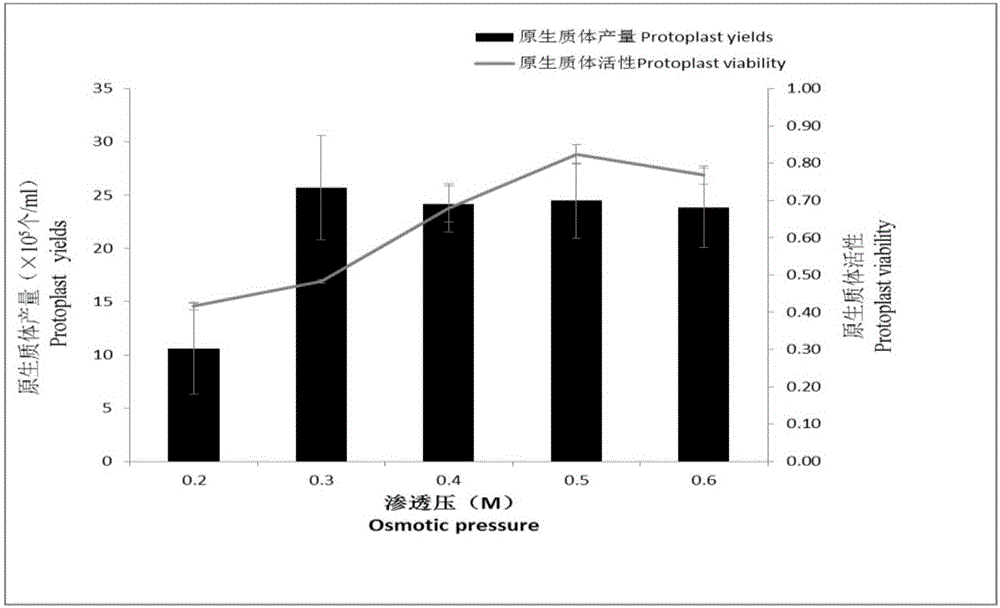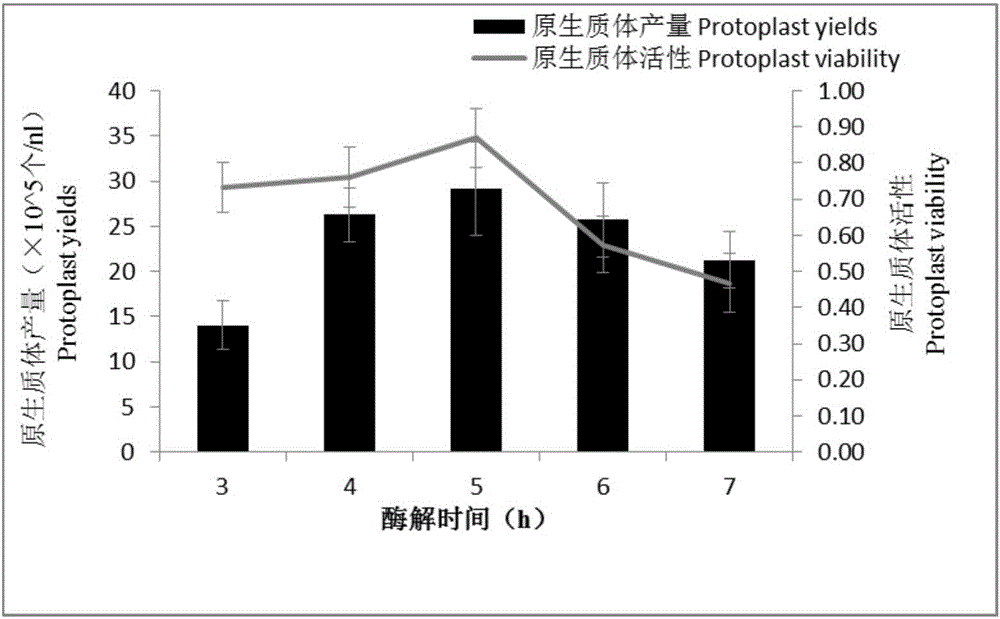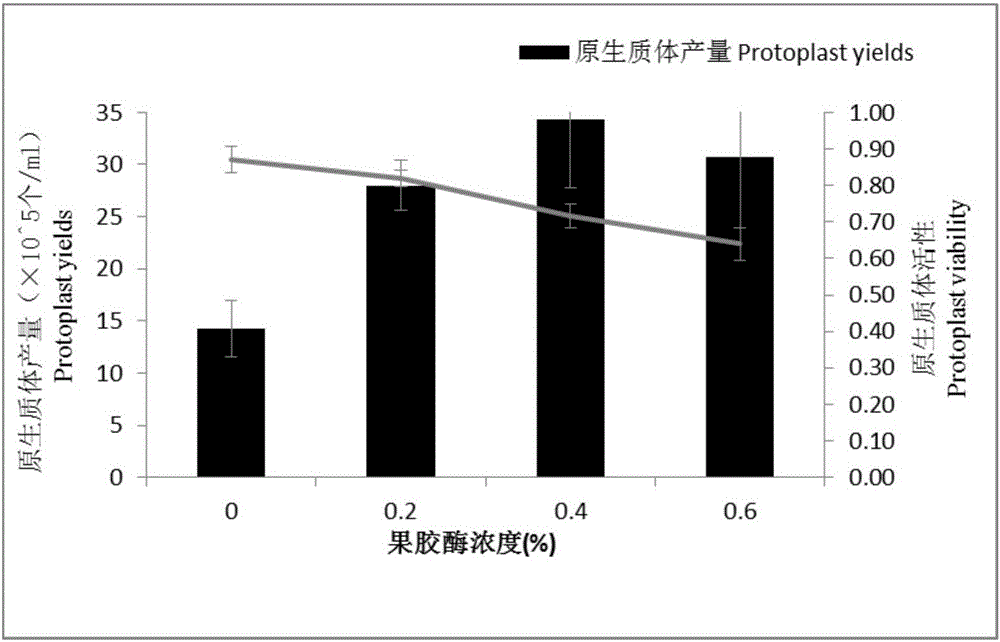Separating and culturing methods for mesophyll protoplasts of petunia hybrida
A technology for protoplasts and separation methods, applied in the field of petunia mesophyll protoplast isolation and cultivation, can solve the problems of petunia separation and culture results differences, genotype differences, etc., and achieve simple operation, concentrated cytoplasm, and little damage Effect
- Summary
- Abstract
- Description
- Claims
- Application Information
AI Technical Summary
Problems solved by technology
Method used
Image
Examples
Embodiment
[0117] This example relates to a method for isolating and cultivating petunia mesophyll protoplasts. The variety of petunia is a white flower variety of the Jinlang series (Petunia hybrida 'Shock Wave'), and the seeds are from Pan American Seed Company. Specifically include the following steps:
[0118] 1. Preparation materials: Take the 3rd to 5th young leaves under the terminal buds of petunia, and weigh 0.5g. Soak in soapy water for 20 minutes, rinse with running water for 1.5 hours. In a sterile operating table, soak in 75% alcohol for 20s, immediately transfer to 1% hydrogen peroxide for 2 minutes, rinse with sterile water for 3 times, dry the water with sterile filter paper, cut into 0.5mm wide filaments connected to each other;
[0119] 2. Enzymatic hydrolysis: Add 5ml of enzymatic hydrolysis solution to a 6cm small petri dish, spread the sterilized leaves in the enzyme solution so that they do not overlap each other. Stand for enzymolysis at 26°C in the dark, and gen...
PUM
 Login to View More
Login to View More Abstract
Description
Claims
Application Information
 Login to View More
Login to View More - R&D
- Intellectual Property
- Life Sciences
- Materials
- Tech Scout
- Unparalleled Data Quality
- Higher Quality Content
- 60% Fewer Hallucinations
Browse by: Latest US Patents, China's latest patents, Technical Efficacy Thesaurus, Application Domain, Technology Topic, Popular Technical Reports.
© 2025 PatSnap. All rights reserved.Legal|Privacy policy|Modern Slavery Act Transparency Statement|Sitemap|About US| Contact US: help@patsnap.com



